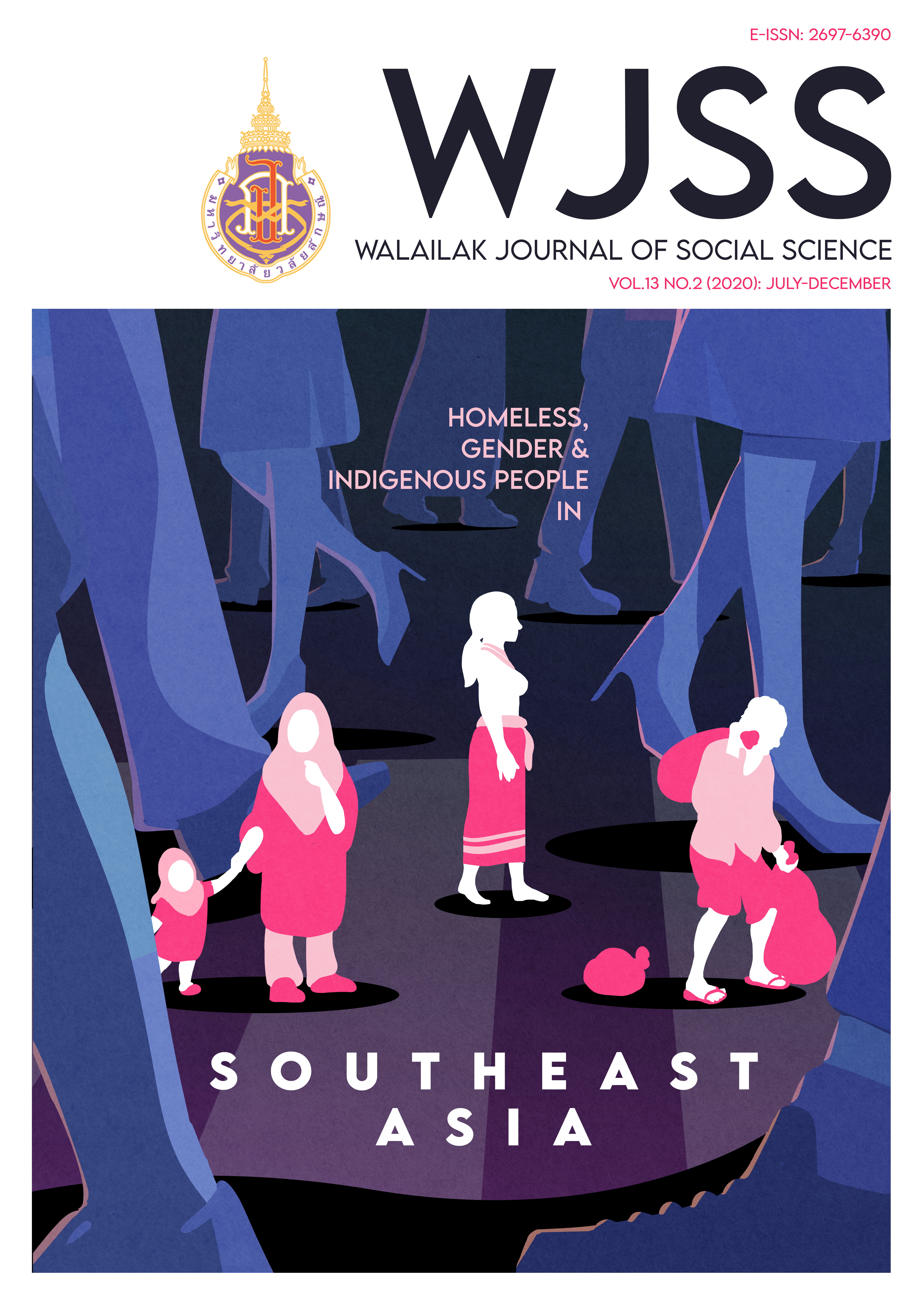The Participatory Action Research in the Experiential Tourism Management by the Ethnic Group Community of Thai Puan Living in Pak Phli, Nakorn Nayok Province
Main Article Content
Abstract
This research is aimed to study the competency and tourism property managed with the experiential tourism management and expectation of tourist in order to use it to develop the tourism product and propose the best practice for management the tourism with experience by the ethnic group community of Thai Puan Pak Phli Nakorn Nayok province. This research is conduced by three research methods including indepth interview, check list and participant observation. The Key informant is the 23 persons involving in community tourism of Thai Puan ethic tourism in Pak Phli. The data from this research analyzed with technique called the content analysis and the research questionnaire is used for this quantitative research. The index of reliability of this research is .78 from the sampling group of 40 tourist and the return of the questionnaires is 247 set which can be calculated as 68.50 percentage of all questionnaires submitted. The result of the research indicates that 1. The tourism capital of Thai Puan tourism community is the cultural capital and local wisdom which has its traditional style composed with their language, unique dressing, cultural and social tradition for twelvemonths called “Hiit Sibsong Tradition”, life style and Traditional art performance of 4 Thai Puan communities located in Bangplee including Fung Klong, Ban Mai, Ta daeng and Kor Whai Communites, 2. The 84.23 of Tourist expectation indicates that they need the authenticity of activity showing the life style of the ethnics which created by the authentic in process and authentic tourism product. 81.27 percentage of tourist expectation of the research shows that they need to participate than observe in order to hand –on an experience and understand the specific cultural of the ethnics group. Tourism activities and tourism products are included with the learning of traditional lifestyle of Thai Puan ethnics through the traditional Thai Puan Museum located at Fung Klong community, Canal Cruise to see the traditional lifestyle of people living by the canal side, Living with ethnic hosting, trying the Traditional food of Thai Puan, enjoying the traditional welcoming ceremony and performing and participating in traditional food culinary or weaving and 3. The best practice for the experiential tourism management should focus on activity which can forward the experience of tourist thorough the authenticity of local wisdom and local capital Moreover, the participation of Thai Puan ethnic people should be promoted in order to give them an opportunity to planning, processing and managing the tourism plan in their community.
Article Details
Copyright: CC BY-NC-ND 4.0
References
Burns, N., & Grove, S. K. (1997). The Practice of Nursing Research : Conduct Critique and Utilization (3rd ed.). Chicago: Rand Mcnally.
Cronbach, L. J. (1951). Coefficient alpha and the internal structure of tests. Psychometrika. 16, 297-334.
Chinachot, P., & Chantuk, T. (2016). Modelof Creative Tourism Management in SuanPhueng. Veridian E-Journal, Silpakorn University, 9(1), 250-268.
Junead, J., Jamnongchob, A., & Manirochana, N. (2015). Experiential Tourism Development at Watthana Nakhon District, Sa Kaeo Province. Journal of Liberal Arts, Prince of Songkla University, 10(2), 156-187.
Khiaomaneerat, P., Petchkam, S., Vaseenonta, C., & Singyabuth, S. (2018). Ban Phu: The Phutai Ethnic Identity and Development Administration In the Context of Sustainable Cultural Tourism. Nakhon Phanom University Journal, 8(2), 17-25.
National Statistical Office. (2015). Tourism Statistics 2015. Retrieved from: http://nknayok.nso.go.th/index.php?option=com_content&view=article&id=322:tour092017&catid=84&Itemid=558
Pathomkanjana, C., & Sungruksa, N. (2015). Guidelines for the Promotion of Cultural Tourism Participation of Community Bangluang, Banglen District, Nakhon Pathom Province. Academic Services Journal Prince of Songkla University, 26(1), 118-129.
Pisalbud, S. (2005). Study Statistics and Research Methodology by Case Study. Bangkok: Witthayaphat Co., Ltd.
Plueaysri, P. and Aneksuk, B. (2018). Ethnic Tourism in Vietnam: Development and Present Status. Journal of Liberal Arts, Prince of Songkla University, 10(1), 1-20.
Prasongthan, S. (2014). Social Capital Potentiality for Creative Community Based Tourism: The Study of Tai Puan Community, Pak Plee District, Nakorn Nayok Province. Journal of Social Sciences Srinakharinwirot University, 16(2), 1-11.
Ratanasuwongchai, N. (2011). Cultural Tourism Development Strategies. Humanities Journal, 18(1), 31-50.
Thongchompunuch, P., & Lapanun, P. (2015). Ethnic Tourism: Mon Ethnic Identity and Economic Opportunity Generation. Journal of Mekong Societies, 14(3), 102-124.
Wetchawong, D. (2011). The Presentation of the Yuan Ethnic Identity in the Context of Tourism via Local Museum and Riverside Market : a Case Study of Yuan Community, Tombon Tontan, Sao Hai District, Saraburi Province. Academic Services Journal, Prince of Songkla University, 22(3), 130-149.
Wiratchai, N. (2005). Pursuating Statitics. Bangkok: Faculty of Education, Chulalongkorn University.
Wisudthiluck, S., Saiphan, P., Teparakul, O., & Sindecharak, T. (2013). Creative Tourism. Bangkok: Designated Areas for Sustainable Tourism Administration (Public Organization).
Yamane, T. (1973). Statistic: An Introductory Analysis. 3rd ed. New York: Harper and Row.


